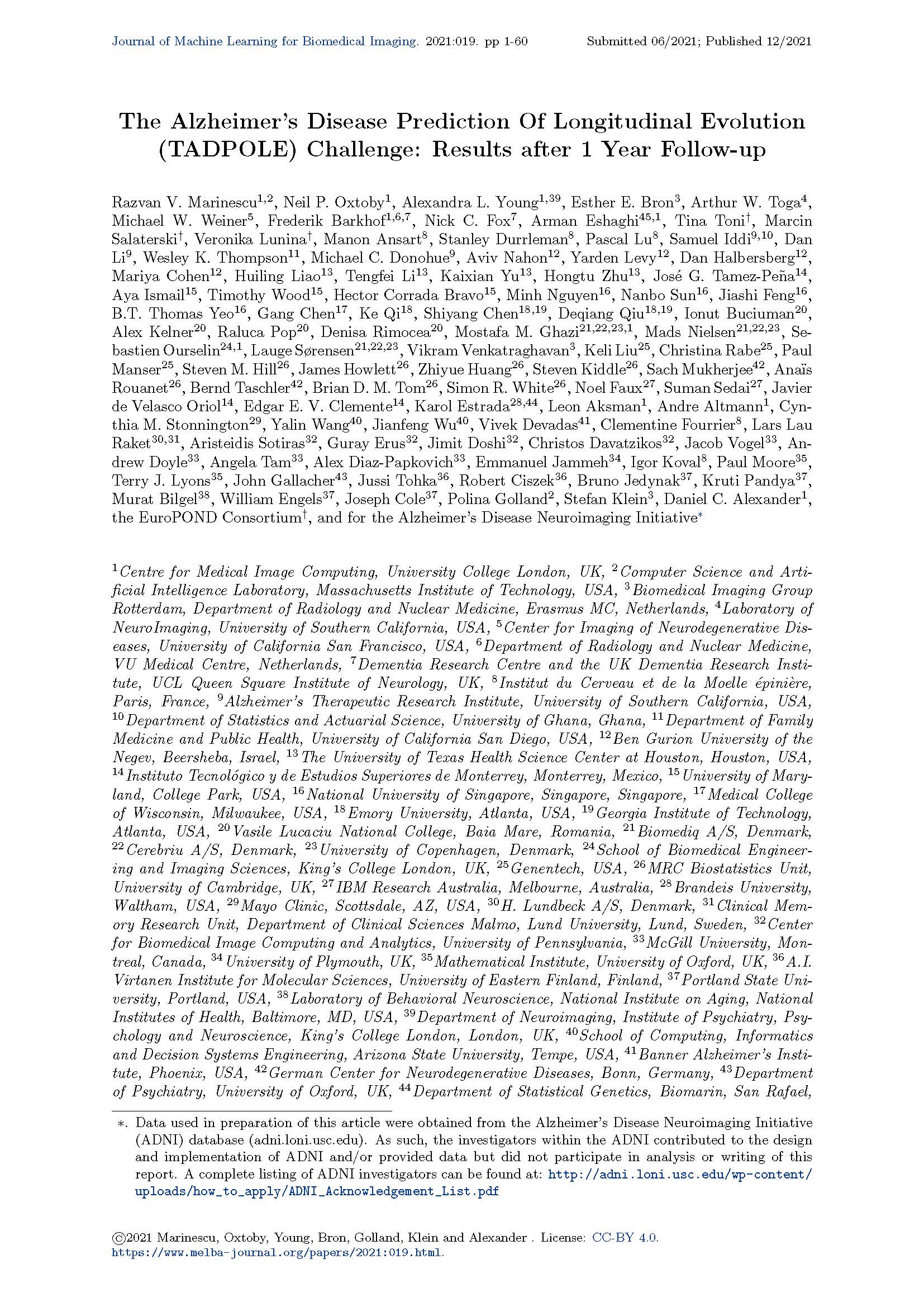Accurate prediction of progression in subjects at risk of Alzheimer’s disease is crucial for enrolling the right subjects in clinical trials. However, a prospective comparison of state-of-the-art algorithms for predicting disease onset and progression is currently lacking. We present the findings of The Alzheimer’s Disease Prediction Of Longitudinal Evolution (TADPOLE) Challenge, which compared the performance of 92 algorithms from 33 international teams at predicting the future trajectory of 219 individuals at risk of Alzheimer’s disease. Challenge participants were required to make a prediction, for each month of a 5-year future time period, of three key outcomes: clinical diagnosis, Alzheimer’s Disease Assessment Scale Cognitive Subdomain (ADAS-Cog13), and total volume of the ventricles. The methods used by challenge participants included multivariate linear regression, machine learning methods such as support vector machines and deep neural networks, as well as disease progression models. No single submission was best at predicting all three outcomes. For clinical diagnosis and ventricle volume prediction, the best algorithms strongly outperform simple baselines in predictive ability. However, for ADASCog13 no single submitted prediction method was signi cantly better than random guesswork. Two ensemble methods based on taking the mean and median over all predictions, obtained top scores on almost all tasks. Better than average performance at diagnosis prediction was generally associated with the additional inclusion of features from cerebrospinal fluid (CSF) samples and diffusion tensor imaging (DTI). On the other hand, better performance at ventricle volume prediction was associated with inclusion of summary statistics, such as the slope or maxima/minima of patient-specific biomarkers. On a limited, cross-sectional subset of the data emulating clinical trials, performance of the best algorithms at predicting clinical diagnosis decreased only slightly (2 percentage points) compared to the full longitudinal dataset. The submission system remains open via the website https://tadpole.grand-challenge.org, while TADPOLE SHARE (https://tadpole-share.github.io/) collates code for submissions. TADPOLE’s unique results suggest that current prediction algorithms provide suficient accuracy to exploit biomarkers related to clinical diagnosis and ventricle volume, for cohort refinement in clinical trials for Alzheimer’s disease. However, results call into question the usage of cognitive test scores for patient selection and as a primary endpoint in clinical trials.cle volume, opening up the possibility of cohort refinement in clinical trials for Alzheimer’s disease.
The Alzheimer’s disease prediction of longitudinal evolution (TADPOLE) challenge: Results after 1 year follow-up
